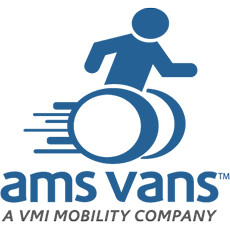
MobilityWorks
Accessibility for all: Helping people connect with who and what matters most
Searching...
No results found. Please try modifying your search.
Help Don Schmidt Get His Life-Saving Kidney Transplant!
Hi, my name is Don Schmidt. Many of you may know me as The Book Kahuna, a publishing industry veteran with over 35 years of experience in editorial and book production. I’ve spent my career helping authors bring their words to life, but today, I’m the one who needs help.
I have Chronic Kidney Disease and have been on dialysis for three years. It’s been a tough road, but the good news is that I am eligible for a kidney transplant—my best chance at reclaiming a fuller, healthier life. However, I am facing a serious financial hurdle that is preventing me from getting the surgery I desperately need.
I was previously receiving full Medicaid benefits, but when I started receiving Social Security payments, I lost my Medicaid coverage. Now, I rely on Medicare, which covers 80% of my transplant costs—but that leaves 20% uncovered. To bridge the gap, I had to enroll in private insurance through Humana, which will cover the remaining costs.
Unfortunately, Humana has a $3,400 deductible that I cannot afford. Without meeting this deductible, I won’t be able to proceed with my kidney transplant. This is where I need your help.
Every dollar raised through this campaign will go directly toward covering my Humana insurance deductible, allowing me to move forward with my kidney transplant. Here’s how your contributions will make an impact:
No amount is too small—even $5 brings me closer to my goal!
Living with kidney disease has changed my life in so many ways. Dialysis has been my lifeline, but it is exhausting and limits what I can do. A kidney transplant would give me the opportunity to live a fuller, more independent life—free from the constant burden of dialysis treatments.
I am so grateful for any support you can provide, whether it’s a donation or simply sharing this campaign with others. Your kindness and generosity mean the world to me. Together, we can make this transplant a reality.
Thank you from the bottom of my heart.
With gratitude,
Don Schmidt
A Great Night at Coors Field, though the weather was lousy...
Life throws some curveballs, and for the past few years, I have been taking my swings against Chronic Kidney Disease and dialysis. Three years on the machine, three years of watching my body fight through the exhaustion, the fluid retention, the dietary restrictions, and the sheer grind of it all. But here is the thing: I am not done yet. I have more books to publish, more knowledge to share, and more life to live. That is why I am looking for a living kidney donor.Now, before you scroll past this thinking, “Wow, that’s a big ask,” hear me out. You might not realize it, but being a living donor is one of the most impactful things you could ever do for another human being. And the best part? You do not even have to be a direct match for me. Let us break this down, step by step, so you know exactly what it takes to be my living kidney donor.Blood Type and CompatibilityFirst, let us talk about my blood type. I am A+. That means my ideal donor would be someone with either A or O blood type. However, even if you are not a match, the kidney swap program opens a world of possibilities, and we will get to that shortly.The Testing ProcessIf you are considering stepping up to be a donor, the first step is a series of medical tests to make sure you are in good health and that your kidneys are functioning properly. Here is what that typically involves:Initial Screening – This is usually a questionnaire about your health history to make sure you do not have conditions that would prevent you from donating.Blood Tests – These determine compatibility and overall health.Urine Tests – To assess kidney function and rule out any underlying issues.Imaging Tests – CT scans or MRIs to get a detailed look at your kidneys.Psychological Evaluation – Donating an organ is a big decision, so hospitals ensure that you are mentally prepared for the process.Physical Exam – A full workup to ensure your body can handle the donation process.All these tests are covered by the recipient’s insurance (in this case, mine), so you do not have to worry about any financial burden for being evaluated.The Kidney Swap ProgramOne of the biggest misconceptions about kidney donation is that you have to be an exact match for the person you want to help. But that is not always the case. The kidney swap program, also known as paired kidney exchange, allows people who are not a direct match for their intended recipient to still save a life.Here is how it works:If you are willing to donate a kidney but are not a match for me, the transplant center finds another donor-recipient pair in a similar situation.They arrange a swap, where your kidney goes to someone who matches you, and their donor gives a kidney to me.This chain can even extend to multiple donor-recipient pairs, creating a life-saving domino effect.It is an incredible system that has allowed thousands of people to receive life-saving transplants who otherwise would not have found a match.The Surgery and RecoveryDonating a kidney is a major surgery, but it is also one of the most routine and safest transplant procedures available. Here is what you need to know about the donation process:The surgery itself takes about 3-4 hours, done laparoscopically in most cases (small incisions, minimal scarring).Hospital stay is typically 1-2 days post-surgery.Most donors are back to their normal activities within 4-6 weeks.Your remaining kidney adapts and takes over full function, meaning you can live a completely normal, healthy life with just one kidney.Why Do It?This is the part that is harder to put into words. If you are even considering being a donor, you already have a heart big enough to understand why this matters. It is about giving someone—me, in this case—a second shot at life. No more dialysis. No more watching the clock, waiting for another treatment. A real, tangible future.And if you are worried about your own health, studies have shown that kidney donors live just as long as non-donors. You do not need two kidneys to live a healthy life. But someone like me? I need one good one to get off this machine and back to fully living.How to Start the ProcessIf you are interested in learning more, the best way to start is by contacting a transplant center and filling out a donor screening form. The National Kidney Registry (www.kidneyregistry.org) and the National Kidney Foundation (www.kidney.org) are excellent resources to guide you through the process. If you are ready to take that first step for me, I would be incredibly grateful.I know this is a lot to take in. Being a living donor is not something to decide overnight. But if you have ever wanted to make a difference—if you have ever wanted to save a life—this is one of the most profound ways to do it. If you cannot donate, that is okay. Just sharing this message and raising awareness means the world to me.I am in this fight for the long haul. But with your help, I just might win it.
How I Battle Metastatic Stage 4 Prostate Cancer and Chronic Kidney Disease: A Two-Front WarIn the annals of history, the United States faced one of its greatest challenges during World War II: a two-front war against the Axis powers. On one side, Nazi Germany threatened Europe; on the other, Imperial Japan launched its relentless assault in the Pacific. Victory required unwavering resolve, strategic adaptation, and an iron will to push forward despite overwhelming odds.That is exactly how I approach my own battle—fighting a war on two fronts against two formidable adversaries: metastatic stage 4 prostate cancer and chronic kidney disease. One is an enemy I never saw coming, and the other is a relentless opponent that has taken up permanent residence in my life. Both threaten my survival, but like the Greatest Generation before me, I refuse to surrender.The Surprise Attack: My DiagnosisJust as Pearl Harbor blindsided America on December 7, 1941, my own war began with a sucker punch. I was already engaged in the struggle with prostate cancer, a battle that would soon reveal even greater consequences. It was a grueling fight, but one that I was determined to face head-on. Then came the second blow: chronic kidney disease.In my case, cancer was not just an enemy—it was also the architect of a secondary front. The disease had caused a blockage that led to my kidney failure, forcing me into the grueling routine of dialysis for the past three years. Like the Nazi blitzkrieg tearing through Europe, this unexpected consequence moved fast, adding another front to my personal war. My mind raced with strategies; my heart pounded with the weight of another front opening in this war for my life.Establishing the Battle PlanFighting two major diseases at once is like coordinating a war across the Atlantic and the Pacific. There is no room for hesitation. Just as General Eisenhower had to orchestrate the D-Day invasion while the Pacific Fleet fought island by island toward Japan, I had to develop a plan of attack that accounted for both threats.The European Theater: Prostate CancerProstate cancer is the Germany of this battle—aggressive, expansive, and aiming for total domination. The first order of business was assembling my forces: my doctors, my oncologists, my family, and my own unbreakable will.Hormone therapy and targeted treatments became my equivalent of bombing raids, meant to weaken the enemy’s strongholds. But like Hitler’s war machine, cancer is adaptable—it changes tactics, develops resistance, and fights to reclaim lost ground. The goal is to push it back, disrupt its supply lines, and prevent it from tightening its grip. Every scan, every test, every consultation is another intelligence report that guides my next move.The Pacific Theater: Chronic Kidney DiseaseMeanwhile, kidney disease is my Imperial Japan—patient, methodical, and deeply entrenched. Unlike the blitzkrieg, this enemy moves with slow, grinding persistence. But in my case, it was not a separate adversary—it was cancer’s collateral damage. The prostate cancer had caused the blockage that led to my kidney failure, making this second front an unavoidable consequence of the first.Dialysis is my island-hopping campaign. Each session keeps me going, maintaining my strength as I work toward finding a living kidney donor—a decisive blow that could turn the tide in this war.The search for a donor is my equivalent of securing reinforcements. Without one, I remain locked in this grueling, attritional struggle. My body, like the American forces in the Pacific, endures, adapting to each hardship, waiting for the breakthrough moment when I can finally launch my own version of an offensive to reclaim lost ground.The Psychological WarfareJust as soldiers faced exhaustion, fear, and uncertainty in the trenches of Europe and the jungles of the Pacific, I battle the mental strain of this relentless war. Some days feel like D-Day—a monumental effort just to get through the battle ahead. Other days feel like the long, grueling slog through the Pacific jungles, where progress is slow and the enemy lurks in the shadows.But like those warriors of old, I rely on camaraderie. My fellow dialysis patients, cancer survivors, and medical teams are my brothers-in-arms. They understand the struggle, the fatigue, and the weight of the fight. Their words of encouragement, their shared battles, and their victories remind me that perseverance is the key to winning this war.The Home Front: My Support SystemNo war is won without the home front. During WWII, the support of families, factory workers, and communities kept the military machine running. In my own fight, my friends, family, and loved ones are my home front. Their encouragement fuels me, their sacrifices give me strength, and their unwavering belief in my ability to endure keeps my spirit unbroken.Every message of support, every shared laugh, every moment of normalcy is a ration of hope—something that, despite the grim realities of war, sustains me. Just as America could not win the war alone, I know that I cannot fight this battle in isolation.The Ultimate VictoryWorld War II did not end overnight. It took years of struggle, sacrifice, and unrelenting determination. I know that my war will not end with a single decisive battle. It will be a campaign of persistence, where small victories—stable test results, good dialysis sessions, hopeful donor matches—add up to a larger triumph.The war against cancer and kidney disease is a brutal one, but I take my lessons from history. The Greatest Generation did not give up, even when the odds were stacked against them. They fought on, one battle at a time, never losing sight of victory.And so will I.#KidneyDonation, #LivingDonor, #DonateKidney, #KidneyTransplant, #BeADonor, #SaveALife, #KidneyForDon, #KidneyNeeded, #ShareYourSpare, #DonNeedsAKidney, #GiveTheGiftOfLife, #KidneyDonorNeeded, #HelpDonSchmidt, #KidneyDonationAwareness, #DonateLife, #shareyourspare
Help Don Schmidt Get His Life-Saving Kidney Transplant!Hi, my name is Don Schmidt. Many of you may know me as The Book Kahuna, a publishing industry veteran with over 35 years of experience in editorial and book production. I’ve spent my career helping authors bring their words to life, but today, I’m the one who needs help.I have Chronic Kidney Disease and have been on dialysis for three years. It’s been a tough road, but the good news is that I am eligible for a kidney transplant—my best chance at reclaiming a fuller, healthier life. However, I am facing a serious financial hurdle that is preventing me from getting the surgery I desperately need.
Why I Need Your HelpI was previously receiving full Medicaid benefits, but when I started receiving Social Security payments, I lost my Medicaid coverage. Now, I rely on Medicare, which covers 80% of my transplant costs—but that leaves 20% uncovered. To bridge the gap, I had to enroll in private insurance through Humana, which will cover the remaining costs.Unfortunately, Humana has a $3,400 deductible that I cannot afford. Without meeting this deductible, I won’t be able to proceed with my kidney transplant. This is where I need your help.
How Your Support Makes a DifferenceEvery dollar raised through this campaign will go directly toward covering my Humana insurance deductible, allowing me to move forward with my kidney transplant. Here’s how your contributions will make an impact:
No amount is too small—even $5 brings me closer to my goal!How You Can HelpDonate – Any amount you can give is deeply appreciated and will go directly toward my transplant expenses.Share – If you are unable to donate, you can still make a huge difference by sharing this campaign with your network.
Spread the Word – Posting on social media, emailing friends, and reaching out to your community can help me reach my goal faster.
Why This Transplant Means EverythingLiving with kidney disease has changed my life in so many ways. Dialysis has been my lifeline, but it is exhausting and limits what I can do. A kidney transplant would give me the opportunity to live a fuller, more independent life—free from the constant burden of dialysis treatments.
I am so grateful for any support you can provide, whether it’s a donation or simply sharing this campaign with others. Your kindness and generosity mean the world to me. Together, we can make this transplant a reality.
Thank you from the bottom of my heart.With gratitude,
Don Schmidt
Loading Images
Make checks payable to:
Help Hope Live
Note in memo:
In honor of Donald Schmidt
Mail to:
Help Hope Live
2 Radnor Corporate Center
Suite 100
100 Matsonford Road
Radnor, PA 19087
Donor preference is important to us. Please specify in writing if you wish for your name or donation amount to be kept private.

Subscribe to this campaign to receive updates.

Accessibility for all: Helping people connect with who and what matters most

Building leading-edge mobility products

One of the largest mobility dealers in the U.S.

Consult with specially-trained pharmacists, get your medications for pickup or delivery and more

All news, and all that matters to you

Your first step to optimized communications

The event for the disability community

Born to connect, empower and inspire the rare disease community.

A mobility dealer for wheelchair accessible vehicles and adaptive equipment